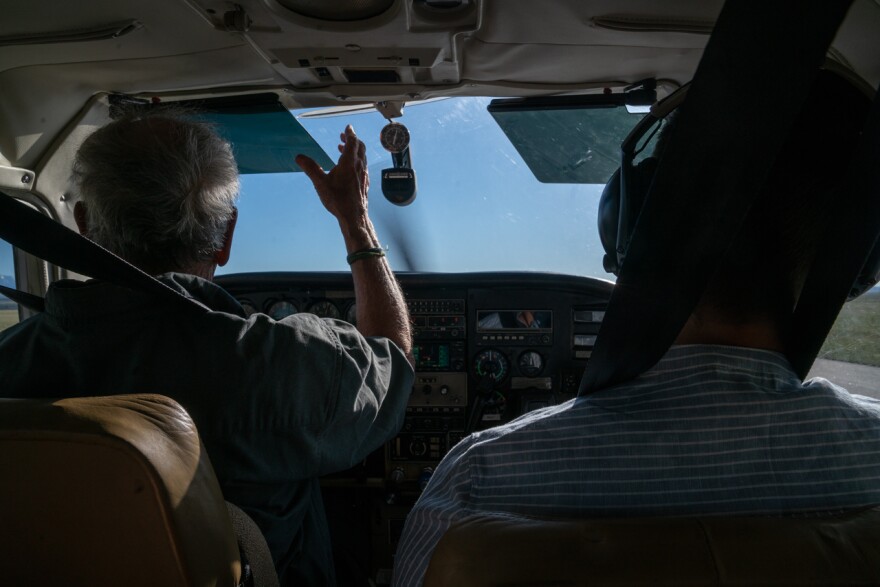Population booms and skyrocketing costs of living are hitting cities all over the state. Park County passed a wide-ranging new growth policy earlier this month designed to deal with the effects it's experiencing locally. Montana Public Radio reporter Nick Mott flew over the area with officials trying to get a handle on what that growth means for Park County.
A green and white single-engine plane, packed to capacity with six people, is soaring over Park County, Montana. The flight, put on by Colorado-based nonprofit EcoFlight, is meant to give a bird’s-eye view of some of the issues addressed by the area’s years-in-the-making growth policy for city and county employees and local nonprofits.
“You guys’ll see on your left, we're starting to fly over Livingston,” says Lawson Moorman, a planner for Park County.
The city of about 8,000 on the banks of the Yellowstone River appears. There are green trees and houses, and we can see a maze of new development on the north side of town.
“You don't want to get a situation where it sprawls on and on for miles,” Moorman says.

To help combat that, Moorman says the growth plan prioritizes filling in new population inside city limits by promoting accessory dwelling units, or smaller structures on the same property as existing homes that could be available for rental. It also creates a donut-shaped buffer area around the city that would allow the enforcement of zoning codes where development could expand.
Moorman points out that Park County hasn’t seen the same boom of subdivisions as its neighbor, Gallatin County, in part because of existing 20-acre lots that haven’t been sold off. We see those big squares of land as we motor along the depression between the Absaroka and Gallatin mountains. We also see RVs parked along the river, and cars charging down the highway towards Yellowstone National Park.
“We get a couple million people passing through the county on the way to the park every year. We are seeing just every year recreation use in the county, which I think is a big part of that pressure people feel,” he says.
As we turn around and head back towards the airport, Moorman waxes philosophical.
“People always have an image in their mind of what a place looks like when they move there. That's kind of the holy grail for what that place should be in their head. Unfortunately, we know the world’s a dynamic place.”
He says a central goal of the county’s growth policy is to preserve the area’s character, even as it changes. The population of the county has steadily and slowly ticked up over the past 40 years. But it’s starting to grow faster, and county planning documents say the new rate of change may now be departing from historic trends.
Mathieu Menard is the deputy planning director for the City of Livingston.
“We talk a lot in planning about being, taking that 50,000 foot view and sort of I got to do that for real today, which was great,” he says.
Menard says there are practically no rentals available in the city, and that’s in part likely due to a COVID-19 related “Zoom boom” of people able to work remotely. At the same time, housing prices have gone through the roof. From May of 2020 to May of this year, median home price in Park County went up, from about $280,000 to $430,000.
He says that’s still just a little less than half the skyrocketing median home price in the Bozeman area, just 30 minutes away.
“We're seeing more pressure for people commuting from Bozeman. We're seeing more remote workers. We're seeing more people buy from out of state than we have in the past and that's putting a lot of pressure on our local market. And it's making it much more difficult for our local buyers to buy because they can't compete,” Menard says.
He says this dynamic makes affordable housing a particularly vexing issue. Median household income in Livingston is just below the median for the state.
A central goal of the 550-page county growth policy is to create more affordable housing inventory, and a Livingston-area housing action plan is in the works.
Michelle Uberuaga, executive director of the Park County Environmental Council, says there’s still time for the area to get ahead of the surge in growth and learn from other parts of the state experiencing similar booms.
“We really have a chance. We're on the precipice. Now we have the hard work ahead of rolling up our sleeves and actually putting that vision into action,” she says.


